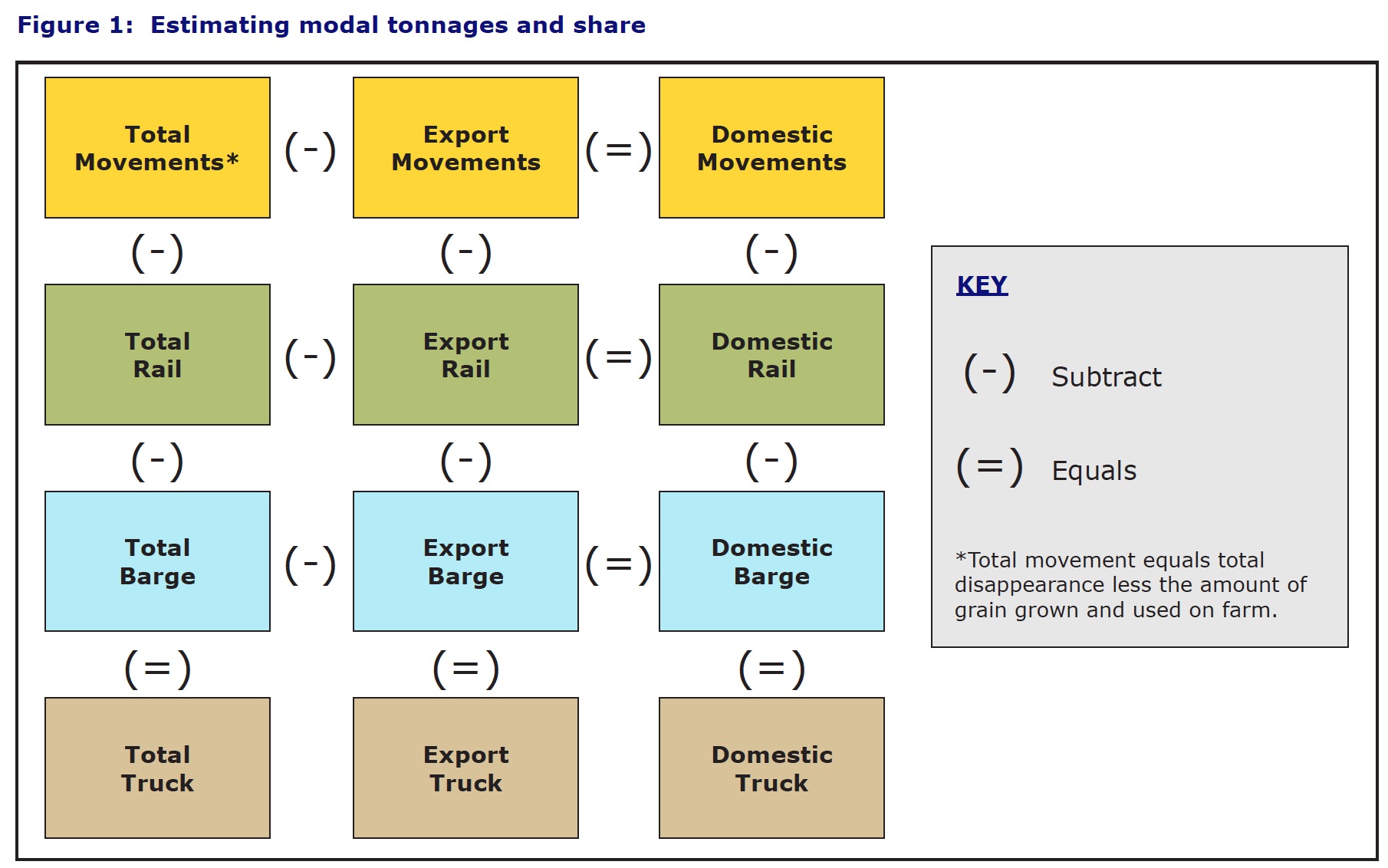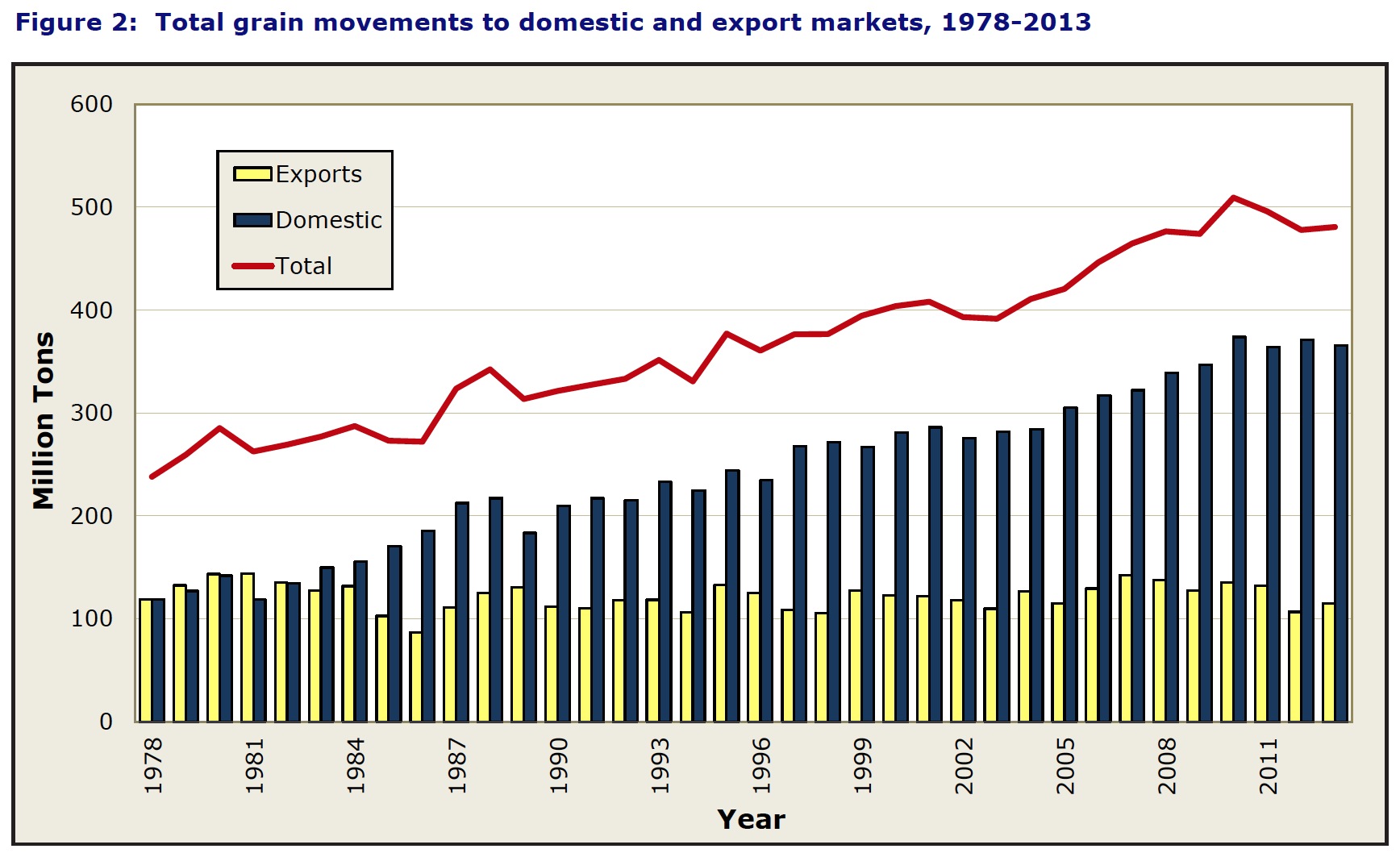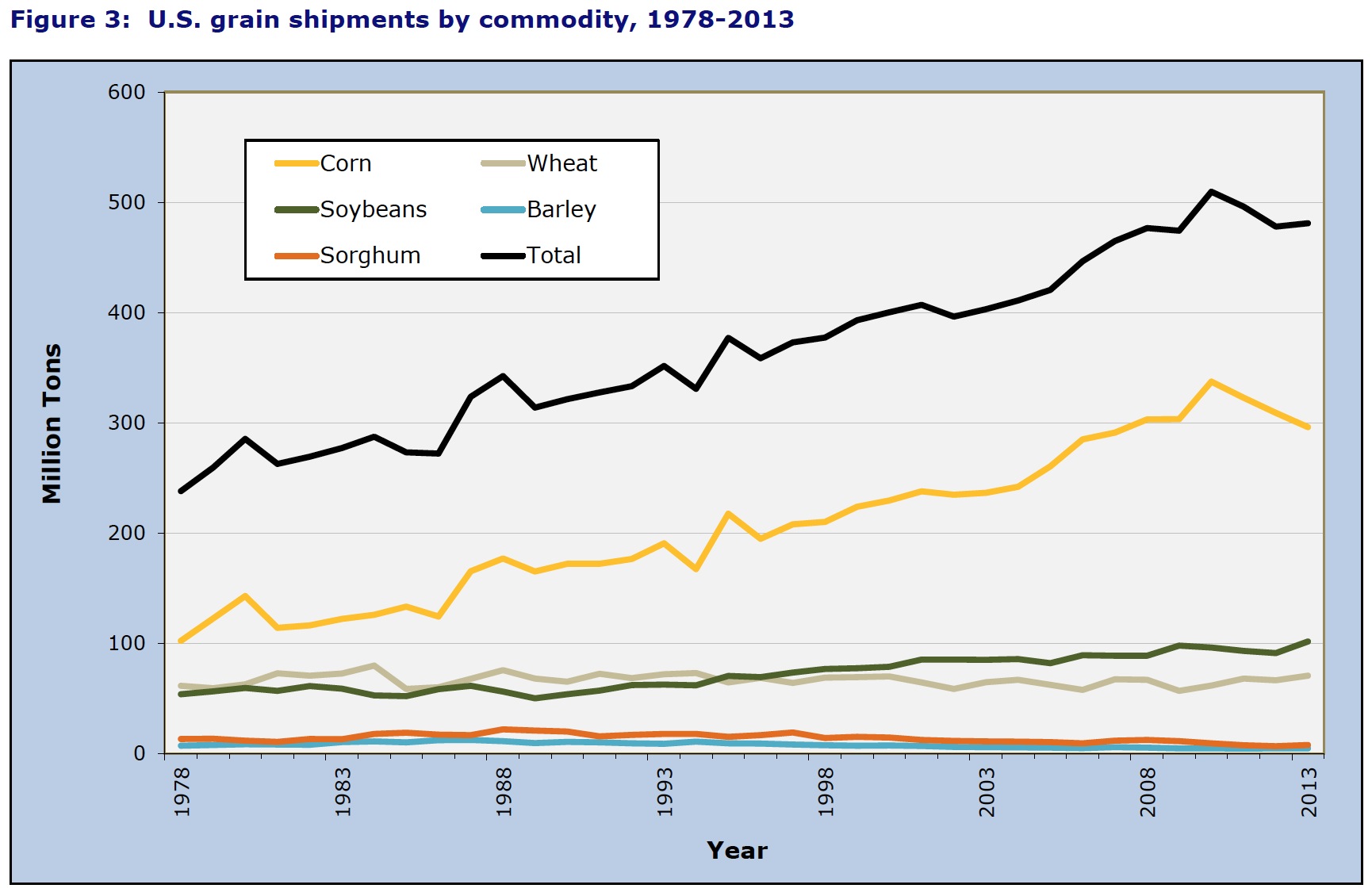UNITED STATES DEPARTMENT OF AGRICULTURE
Introduction
The purpose of this analysis is to examine trends in the type of transportation used to move grains grown for the food and feed industry. Grains produced in the United States move to domestic and foreign markets through a well-developed transportation system. Barge, rail, and truck transportation facilitate a highly competitive market that bridges the gap between U.S. grain producers and domestic and foreign consumers.
Barges, railroads, and trucks often compete head-to-head to supply transportation for grains. Despite a high degree of competition in some markets, these modes also complement each other. Before a bushel of grain reaches its final destination, it has often been transported by two or more modes. This balance between competition and integration provides grain shippers with a highly efficient, low-cost system of transportation. The competitiveness of U.S. grains in the world market and the financial well-being of U.S. grain producers depends upon this competitive balance. A highly competitive and efficient transportation system results in lower shipping costs, smaller marketing margins for middlemen, and more competitive export prices. Such efficiencies also result in lower food costs for U.S. consumers and higher market prices for U.S. producers.
This analysis of the transportation of the final movement of grain, by mode, provides information about changes in market share among the modes. Over several years, such work helps identify critical trends affecting the transportation of grain. It also provides a framework to assess public policies that influence the development and success of the Nation’s transportation infrastructure. Public policies that promote an efficient grain transportation system also promote strong U.S. agricultural and rural economies.
Note to reader regarding past versions of this report. This update presents new data for 2012 and 2013 as well as minor revisions to previous years.
Methodology
Estimating modal tonnages and shares
Any effort to measure tonnages of grain moved by mode of transport is limited by the absence of information on the total volume of truck movements. Accurate data exist for barge and rail freight tonnages and commodities, but not for trucks. Other analyses of grain movements have relied extensively on survey data to overcome this obstacle. This analysis uses the Waterborne Commerce Statistics of the U.S. Army Corps of Engineers to calculate tonnages of barged grain and uses the Carload Waybill Sample from the Surface Transportation Board to estimate the amount of railed grain. Trucking data are derived from known grain production data, as compared to the estimates of the railed and barged volumes of grain. Estimating these modal grain volumes and modal shares on an annual basis provides a data series that tracks changes in grain transportation over time.
In this analysis, the term “modal share” describes that portion of the total tonnages of grain moved by each mode of transport—barge, rail, or truck. These shares, expressed as percentages, were determined by mode for particular types of grains and movements. Grains identified for this analysis were corn, wheat, soybeans, sorghum, and barley. The 1992 and 1998 versions of this study also included rye and oats. Rye and oats were taken out of the calculations for this report because of unreliability due to small volumes, which total less than 1 percent of all grain movements. Transport modes are categorized according to the final movement going to domestic markets or ports for export.
The estimates of modal tonnages and shares are based on the amount of grain moved to commercial markets. Truck tonnages are estimated by subtracting barge and rail tonnages from total tonnages transported. Figure 1 shows how modal shares are estimated. For each crop, total movements are determined first, and then exports are subtracted from the total to get domestic movements. Total rail and barge volumes are subtracted from total movements to get truck movements. A more detailed description of the methodology is covered in Appendix A.
Download full version (PDF): Transportation of U.S. Grains
About the United States Department of Agriculture
www.usda.gov
The USDA provides leadership on food, agriculture, natural resources, rural development, nutrition, and related issues based on sound public policy, the best available science, and efficient management. Their goal is to expand economic opportunity through innovation, helping rural America to thrive; to promote agriculture production sustainability that better nourishes Americans while also helping feed others throughout the world; and to preserve and conserve our Nation’s natural resources through restored forests, improved watersheds, and healthy private working lands.
Tags: agriculture, Food, Grain, Rural, United States Department of Agriculture, USDA









 RSS Feed
RSS Feed